
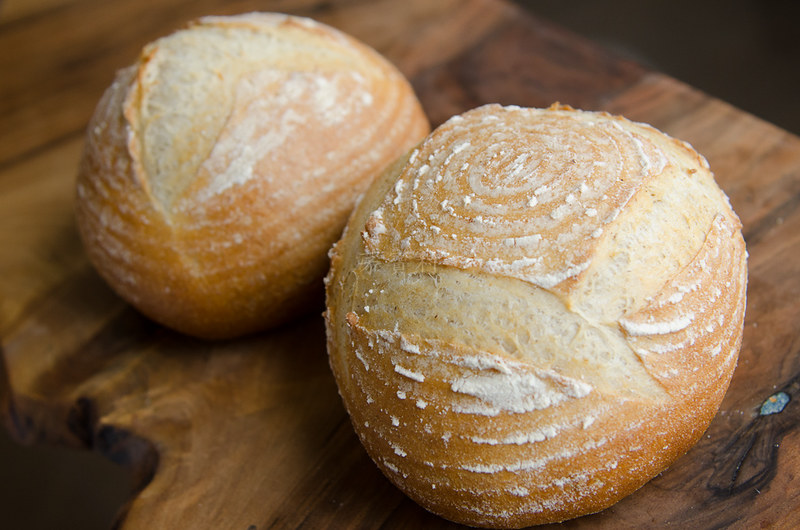
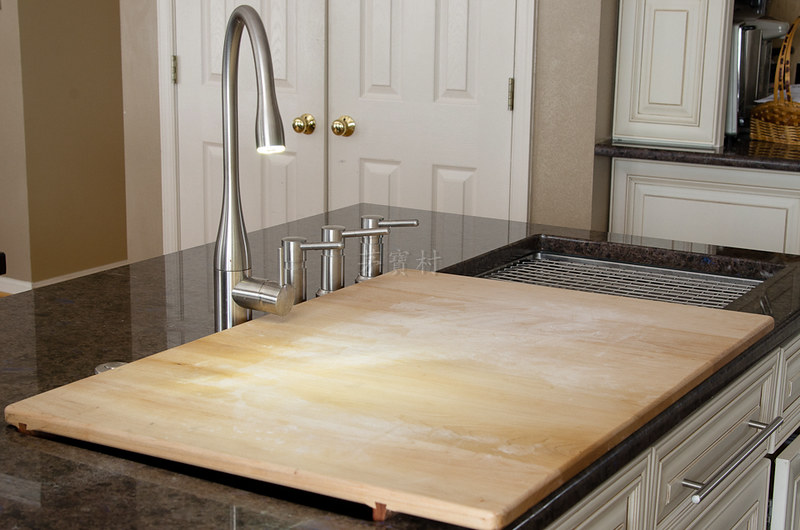
I enjoy reading here at TFL. So much information, like all experts around the world is here. I finally decide to post today because I am so excited about my new customized kneading board and have to share my happiness! My kitchen has two commercial grade huge sinks installed. Usually I bake at the island area which has one of the sinks. However, I often feel that the space is not enough on the island b/c the sink has taken up so much. So I figured that the only thing I can do is to cover the sink area (which is >50 inches wide and 20 inches long) with a kneading board while baking and put it away when I am done. However, there is no prebuilt kneading board that can fit my needs on the market. I tried several customizing sites and their price is sky high for me. Finally, I found a site and got a great deal! The guy did a wonderful job! The material is not too heavy but super sturdy. Two lips under the board stabilized it right on top of my sink. He chose a different color for the lips which adds elegancy to the board. I can slide it to right if I need to use the faucet. The surface of the board is just right for kneading dough. Not like my granite countertop, too slippery after I dust with flour. Once I am done baking, simply scrape everything into the sink and put the board away! Heaven! This is the island area. It's double sinks with a draining area on the right which has a slight angle so water will run into sink.
Because of the bases of faucet, soap dispensers, and the button for disposer, there is only 1" of space left for the kneading board to rest. Since someone asked about the sinks, it's
this1 and
this2.

The lips of the board uses a different kind of wood which adds 'spices' to it.
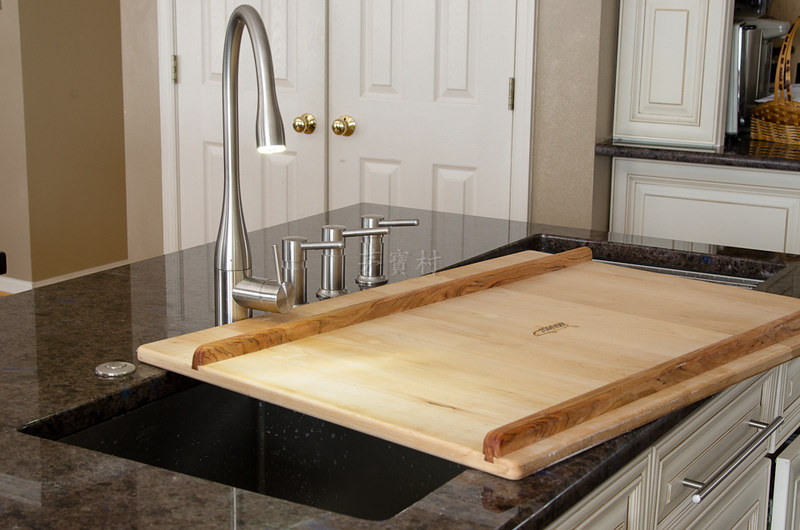

I can put the board on the left of the sink.

Or to the right if I need to use the faucet.

Tones of space for my baguettes dough

See the height of the board is close to the handle of the faucet.
In case you are curious, that little 'cylinder' is used to estimate how much the dough has risen. I put a tiny piece
of dough from the baguette dough into it and ferment at the same condition. Works like a charm!That flour wand is also very helpful. Never too much flour again!
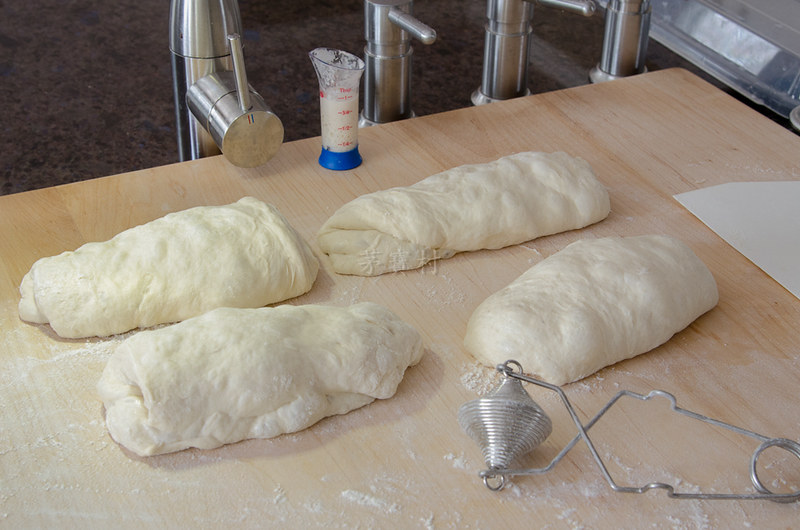
Ok, back to my baguettes. I am picky about baguettes that have thin crust, chewy but still soft and moist crumb, beautiful ears (from scoring the dough), and a little sourness. Who doesn't? Unfortunately, I don't have a steam oven. So I use lava stones to create steam. So far so good. Very good steam! The crust is pretty thin. But I need to work on my scoring.
Poolish (or I use my SD starter 600g):
French Flour 300g
water 300g
insant yeast 1g
Ferment at R.T until bubbling. Usually takes 6-8 hours for me. Then refrigerated overnight.
Final dough:
All poolish
French Flour 700g
Water 450g
instant yeast 1 tsp
salt 21g
diastatic malt powder 1tsp
I use mixer gentally mixed everything into a wet ball. lowest speed maybe for a minute or so. Then ferment at R.T. (about 65F here).
30min S/F 2x
30min S/F/2x
30min S/F/1x
1hour S/F/1x
.....
.....
continue to S/F every 1 hour until my small cylender (see picture below) becomes 3 fold (grow from 10 to 30)
sometimes when it's 2 fold, I put it into refrigerator until next evening then continue below.
split to 4 equal dough, preshape, relax for 30min
shape into baguettes, rise for 1 hour
preheat oven with stone and lava rock to 290C (500F)
bake for 20min at 240C, 10 min with steam.
I have used several kinds of flour from King Arthur. But as you can guess, the best texture comes using their
'French style' flour. But that flour is SOOOOOO expensive!

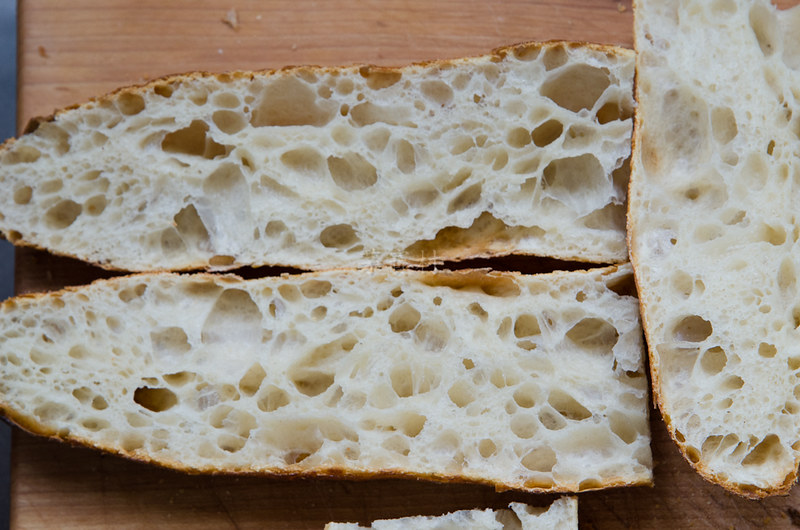


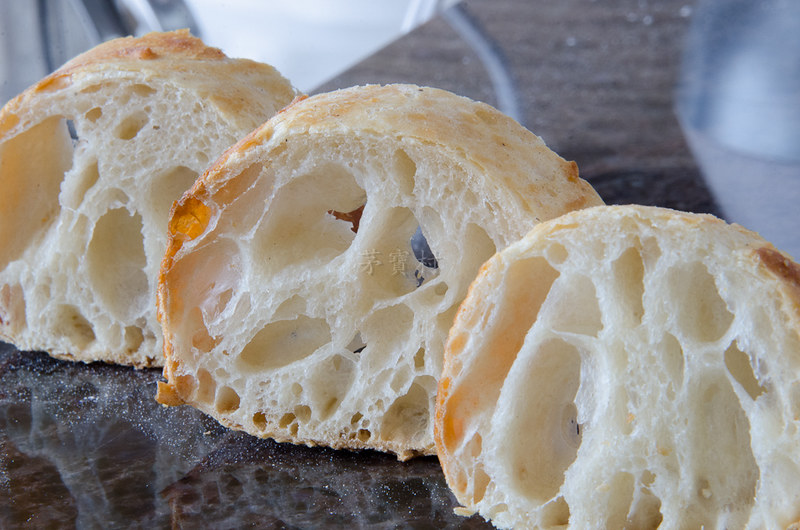
This is BBA's Pain de Campagne. I mixed in some pumpernickel flour so it's color gets tiny dark.


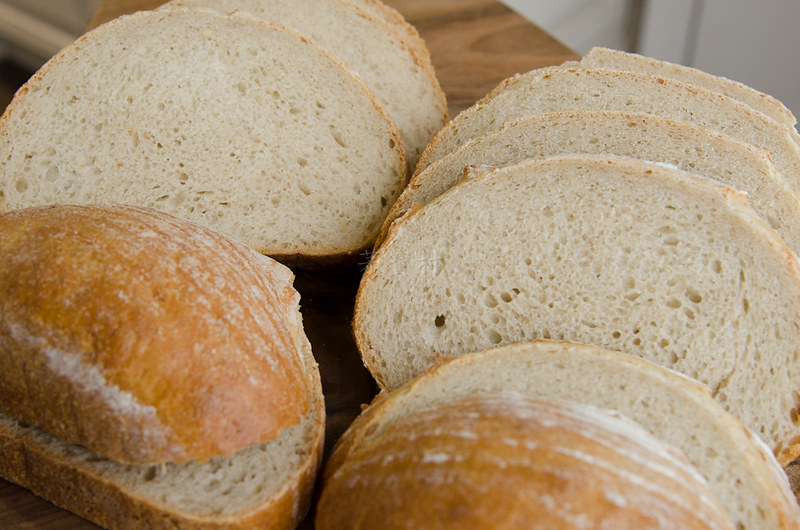
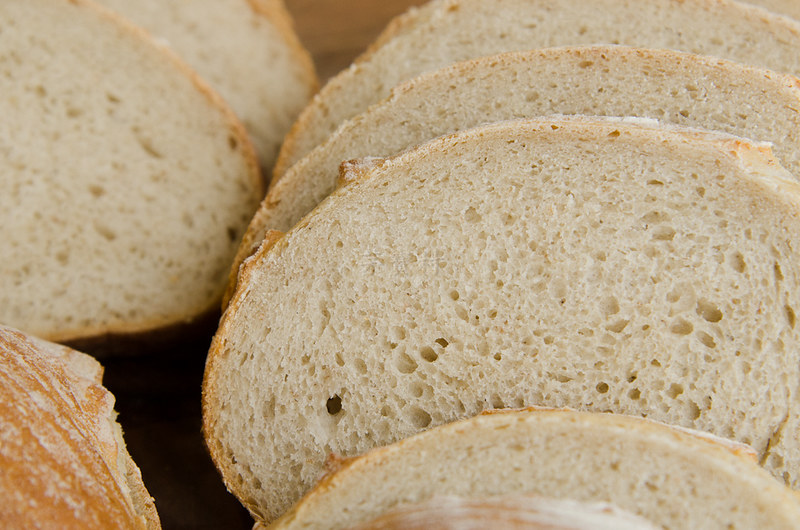
Hope you like my first post on TFL !!!
